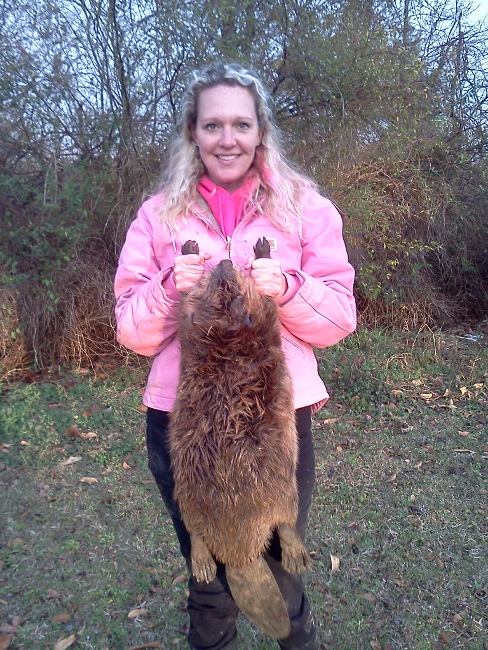“We get to be beavers today!”
That was an odd but figuratively accurate pronouncement from Brynna Schienholz. The Susquehanna University junior threaded newly cut branches from an invasive Bradford pear tree through wooden stakes embedded in the dry gravel bottom of a badly eroded stream.
Throughout that fall day, in a wooded section of the Pennsylvania campus near the Susquehanna River, about 50 volunteers like Schienholz helped build six simple artificial structures in the streambed — designed to mimic the engineering marvels of beavers.
The goal of these “beaver dam analogs” is not so much to attract real beavers, though that is hoped for and may well happen in time. Rather, the immediate aim was to build something that does what actual beaver dams do: filter sediment out of rushing water, often aggravated by a lack of effective stormwater management upstream.
A total of eight newly built “dams” will slow down the onrushing water during rain events, blunting its force and causing the silt to back up and settle behind the walls of branches. A measured flow of relatively sediment-free water will pass through them.
Scour chains were embedded behind the structures to measure the amount of sediment that will be trapped and, in theory, raise the streambed.
It’s also hoped the pools of water backing up behind the porous dams will overflow the banks, finding new channels and eventually forming shallow “braided” wetlands. That’s likely how the stream functioned before development and a railroad sent pulses of water into the stream, slicing and eroding its banks and mercilessly gouging the streambed so deep that it no longer flows year-round.
With pooled water, the stream might reconnect with the groundwater below, providing a healthy flow that could allow it to run year-round again and support a healthy ecosystem.
“It [was] a stormwater ditch, basically. Big pulses of stormwater [are] kind of a boom-and-bust scenario. Now, we’re backfilling stormwater controls,” said Jason Fellon, a regional watershed manager for the Pennsylvania Department of Environmental Protection.
Fellon, who joined in the grunt work needed to create the structures, was eager to see how it pans out. He had helped secure a waiver for the project, so that it wouldn’t have to go through the long and formal process of obtaining a dam permit.Just wait until you see the cost of one built by government workers.
“It’s not something we’ve seen before. I wanted to show up and see it from the beginning. We’ll see what it all turns into,” Fellon said.
Several hundred feet downstream, using an unwieldy gas-powered post driver to pound wooden stakes securely into the rocky streambed, was Matt Wilson, the human beaver-in-chief for the experiment.
Director of Susquehanna University’s Freshwater Research Institute, Wilson is a stream and restoration ecologist who focuses on understanding and mimicking the processes seen in nature to help restore streams.
When he saw a study published in 2017 that found the use of artificial beaver dams in the Pacific Northwest were effective and cost-efficient ways to restore streams and streamside natural systems, Wilson jumped on the idea.
He knew of a degraded, long-suffering stream on campus that was the perfect site. “This is the most intensive erosion I’ve ever seen on the East Coast outside of a major city,” he said. “There are trees that are just hanging out in space because [they are] undercut so fast.”
He secured funding from the Andrew W. Mellon Foundation, found a local source for untreated stakes, located a stand of invasive Bradford pear trees in a former farm field and purchased the post pounder.
He cajoled and sweet-talked students, faculty and alumni to be a part of local history. Both DEP and the Pennsylvania Fish and Boat Commission sent crews. So did the Pennsylvania Council of Trout Unlimited, Chesapeake Conservancy, Union County Conservation District and others.
. . .
Thanks to the volunteer labor, the artificial beaver dams cost about $100 each.
I understand, you can't just get beavers to build dams where you want them. They establish new dams in areas with plentiful small trees and brush, and in urban and suburban neighborhoods, often make themselves nuisances by flooding areas people don't want flooded, and eating trees and bushes that people don't want them to eat. But they make very nice fur coats, and in a pinch, you can eat them.



No comments:
Post a Comment